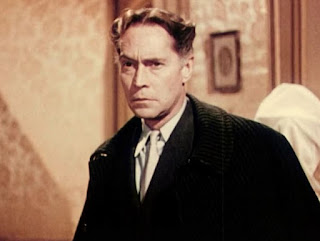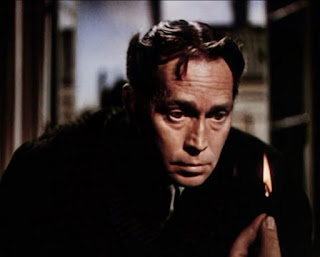 |
| Jean Wallace |
Johann Radek (Franchot Tone) is a sly, kooky character dining across the cafe. Radek passes a note to Mr. Kirby, offering to murder the wealthy aunt.
Meanwhile, the film's director Burgess Meredith stars as Joseph Heurtin, a quiet, hard-working man whose wife does nothing but belittle him. Heurtin decides to break in to and steal from Kirby's aunt's house, and unwittingly walks into a murder scene. When Heurtin loses his thick glasses (very similar to Meredith's Twilight Zone "Time Enough at Last" spectacles), the murderer Radek helps him home.
Because his glasses are left at the scene, Heurtin is first implicated in the murder. Heurtin helps the police identify Radek, but Radek is so sneaky and clever that he is able to taunt the police. Charles Laughton is brilliant as the lead inspector working to bait and catch Radek.
Franchot was 44 years old when The Man on the Eiffel Tower was filmed and the film, in my eyes, is his transition from romantic lead to interesting character actor. Although Franchot had played a killer once before in 1944's Phantom Lady, Eiffel Tower is where we first see Franchot's face (a bit more lined with wrinkles and wisdom) taking on the characteristics that he would display in his television work. His hair and clothes are somewhat disheveled and his eyes are full of mischief.
One of my favorite scenes is the exciting Eiffel Tower climb at the end of the film. Radek attempts to resist arrest by climbing the Tower, but Heurtin and the Inspector are close behind. The cityscape is visually stunning and the scene itself will have you on the edge of your seat!
You can watch The Man on the Eiffel Tower on Youtube or at the Moving Image Archive. There is also a DVD available on Amazon.

























Excellent post! keep sharing such a post
ReplyDeleteeiffeltowerfacts
Article submission sites